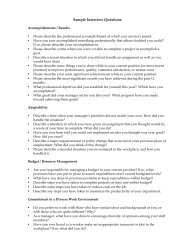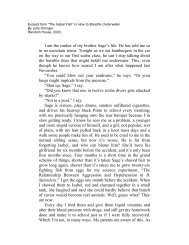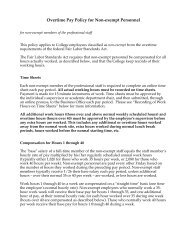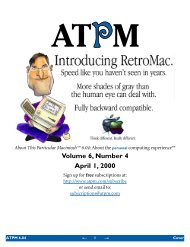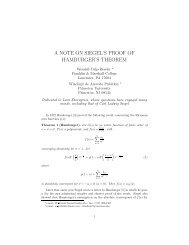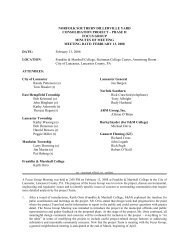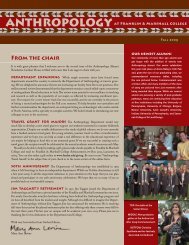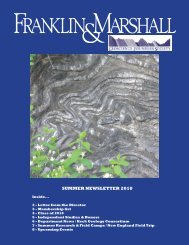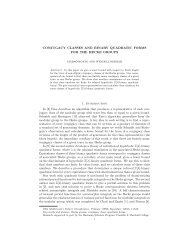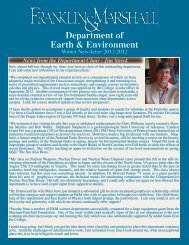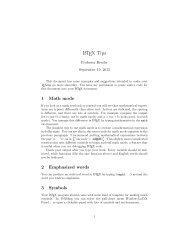Guidelines for Conducting Effective Employment Interviews
Guidelines for Conducting Effective Employment Interviews
Guidelines for Conducting Effective Employment Interviews
You also want an ePaper? Increase the reach of your titles
YUMPU automatically turns print PDFs into web optimized ePapers that Google loves.
elated to those skills, abilities, and education/experience needed to per<strong>for</strong>m the jobeffectively. Each candidate must be evaluated based on the same job-related criteria.Factors such as gender, race, religion, national origin, age, disability, sexual orientation,color, or family status must not influence the evaluation of a candidate's ability toper<strong>for</strong>m the job. Avoid making assumptions about candidates based on stereotypes andavoid jumping to conclusions based on appearance or other non-job-related factors. Forexample, it is illegal to avoid offering a job to a male candidate based solely on theassumption that a man cannot coach female athletes, or to assume during the selectionprocess that a professor in the Spanish department must be of Spanish descent (althoughyou may certainly require that a Spanish professor speak and write fluently and have indepthknowledge of Spanish culture, history, geography, etc.). Take time to <strong>for</strong>mulateyour opinion of each candidate; give him/her a fair opportunity to demonstratequalifications.Each candidate should be evaluated in comparison to other candidates, and also onhis/her own merits. When evaluating candidates, the manager / search committee maywish to use an evaluation sheet as discussed above; rank the candidates based on howwell they meet the criteria necessary <strong>for</strong> successful job per<strong>for</strong>mance, with the #1 rankinggoing to the candidate who best meets the criteria; or summarize each candidate'sstrengths and each candidate's weaker areas.When evaluating employment candidates, avoid these errors:• Focusing solely on personality traits versus work experience and abilities.• Allowing personal bias to influence the evaluation of a candidate rather thanfocusing on the skills, knowledge, and abilities of the candidate.• Making assumptions about candidates based on appearance; allowing stereotypesto influence the selection decision.• Allowing one characteristic of a candidate to be overly influential (either positivelyor negatively).• Comparing the candidate to oneself (the interviewer) and making judgementsbased on how similar or dissimilar the candidate is to the interviewer.As you are evaluating candidates, consider both in<strong>for</strong>mation you gained throughemployment interviews and in<strong>for</strong>mation you obtained through your reference checks.If none of the candidates are well-qualified <strong>for</strong> the position, the search should continue.Document reasons <strong>for</strong> the selection decision-- Keep documentation of each candidate'sstrengths and weaknesses, skills, abilities, relevant knowledge, professional experience,and what you learned from professional references. Document observable behaviors ofthe candidates, rather than your impressions (<strong>for</strong> example, "John Doe responded in a curtmanner to interviewers' questions", rather than "John Doe seemed rude").Forward documentation regarding the selection decision to Human Resources-- Forprofessional staff searches, send documentation regarding the selection decision, and allsearch committee members' notes, to the Associate Director, Human Resources be<strong>for</strong>e anoffer of employment is made. A New Hire Documentation Form (available from the



